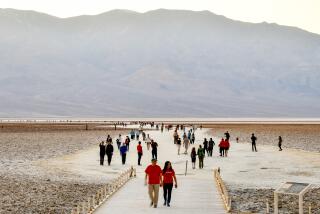Egypt Opens 6 Royal Tombs
- Share via
CAIRO — Attempting to lure back wary tourists whose numbers have dropped off in Egypt since the onset of terrorist attacks, antiquities authorities have opened six new royal tombs in and around the Valley of the Kings never before open to the public.
Restored at a cost of $448,000, the burial chambers now on view include the tombs of three pharaohs--Ay, an official in the court of King Tutankhamen who followed the boy king as ruler of Egypt; Ramses VII, and Siptah--along with the noblemen’s tombs of Hijoti-Mes, Ne-Nefer and Nefer-Serkheru. The openings on Nov. 27 coincided with a new outdoor production of the Verdi opera “Aida” at the temple of Queen Hatshepsut in Luxor, which Egypt says will be a recurring attraction.
The openings come amid reassurances that torrential rains in Upper Egypt last month did not result in irreparable damage to the Pharaonic tombs. Twelve of the 62 tombs in the Valley of the Kings--including those of Tutankhamen, Ramses I and Ramses III--were exposed to water leakage. The worst hit was the tomb of Seti II, where water 2 1/4 inches deep collapsed the gate and part of the fence. No drawings or etchings inside the tombs were affected, however.
Authorities have also moved to block construction of a controversial new ring road around the historic pyramids in Giza, the only survivors among the seven wonders of the ancient world.
President Hosni Mubarak ordered a temporary halt to the road, located less than a mile and a half from the large Cheops pyramid, after UNESCO argued that the road will endanger the historic site, rich in unexcavated antiquities that could possibly include even some undiscovered pyramids.
UNESCO has demanded that the highway be moved at least 12 miles back from the pyramids. But Mubarak’s order merely halts work until a scientific study is undertaken to measure the road’s impact on the archeological area.
More to Read
Sign up for Essential California
The most important California stories and recommendations in your inbox every morning.
You may occasionally receive promotional content from the Los Angeles Times.













